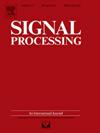Dynamic payload adjustment in image steganography through interpolation and center folding strategies
IF 3.4
2区 工程技术
Q2 ENGINEERING, ELECTRICAL & ELECTRONIC
引用次数: 0
Abstract
This research introduces a novel interpolation reversible data hiding (IRDH) scheme designed for secure and efficient steganographic techniques, enhancing both image quality and embedding capacity. The interpolation method involves using the original image to zoom in twice for expanding more spaces to embed the secret data. Simultaneously, the values of the original pixels (refer to “seed pixels”) are unchanged that serve for the extraction. Remarkably, the extraction process does not require a reference image, accurately retrieving both the embedded messages and the original image. The embedding procedure divides the cover image into 4 × 4 blocks. Within each block, four seed pixels remain unchanged, serving as references for recovering both the secret data and the cover image. Before embedding the data, the Multi-layer Center Folding Strategy (MCFS) encodes the secret data to minimize distortion. This strategy offers flexibility by allowing dynamic adjustments to the data embedding rate and Peak Signal-to-Noise Ratio (PSNR). The adaptability of this method lies in modifying the bit group parameter () within MCFS, enabling users to optimize the balance between embedding capacity and image quality. By fine-tuning , the method achieves higher data capacity without compromising the visual integrity of the cover image. Experimental results demonstrate significant improvements in PSNR and embedding capacity compared to existing IRDH techniques.
The highlights of this paper are shown below.
- 1.Novel Multi-layer Center Folding Strategy (MCFS): Introduced a new MCFS that significantly reduces image distortion and optimizes the balance between payload capacity and image quality.
- 2.Advanced Interpolation-Based Reversible Data Hiding (IRDH) Method: Developed an innovative interpolation technique that enhances embedding capacity and preserves image fidelity, achieving superior PSNR values.
- 3.Dynamic Flexibility in Embedding: The proposed method allows adjustable trade-offs between embedding payload and image quality, tailored to specific application requirements.
- 4.Improved Security and Robustness: Demonstrated strong resistance to steganalysis attacks (e.g., RS steganalysis and histogram analysis) while maintaining high image quality.
- 5.Comprehensive Evaluation: Conducted extensive experiments on multiple datasets, achieving higher PSNR and SSIM values compared to state-of-the-art techniques, showcasing the method's efficacy and generalizability.
基于插值和中心折叠策略的图像隐写动态有效载荷调整
本研究提出了一种新的插值可逆数据隐藏(IRDH)方案,该方案设计用于安全高效的隐写技术,提高了图像质量和嵌入容量。该插值方法是利用原始图像放大两倍,以扩大更多的空间来嵌入秘密数据。同时,用于提取的原始像素(即“种子像素”)的值保持不变。值得注意的是,提取过程不需要参考图像,可以准确地检索嵌入的消息和原始图像。嵌入过程将封面图像划分为4 × 4块。在每个块内,四个种子像素保持不变,作为恢复秘密数据和封面图像的参考。在嵌入数据之前,多层中心折叠策略(Multi-layer Center Folding Strategy, MCFS)对秘密数据进行编码,以减少数据失真。该策略提供了灵活性,允许动态调整数据嵌入率和峰值信噪比(PSNR)。该方法的适应性在于修改MCFS内部的位组参数(n),使用户能够优化嵌入容量和图像质量之间的平衡。通过微调n,该方法在不影响封面图像视觉完整性的情况下获得更高的数据容量。实验结果表明,与现有的IRDH技术相比,PSNR和嵌入容量有了显著提高。本文的重点如下。新型多层中心折叠策略(Multi-layer Center Folding Strategy, MCFS):提出了一种新型多层中心折叠策略,可以显著降低图像失真,优化有效载荷能力和图像质量之间的平衡。先进的基于插值的可逆数据隐藏(IRDH)方法:开发了一种创新的插值技术,增强了嵌入容量,保持了图像保真度,获得了优越的PSNR值。嵌入的动态灵活性:所提出的方法允许在嵌入有效载荷和图像质量之间进行可调整的权衡,以适应特定的应用需求。提高安全性和鲁棒性:在保持高图像质量的同时,显示出对隐写分析攻击(例如RS隐写分析和直方图分析)的强大抵抗力。综合评价:在多个数据集上进行了广泛的实验,与最先进的技术相比,获得了更高的PSNR和SSIM值,证明了该方法的有效性和通用性。
本文章由计算机程序翻译,如有差异,请以英文原文为准。
求助全文
约1分钟内获得全文
求助全文
来源期刊

Signal Processing
工程技术-工程:电子与电气
CiteScore
9.20
自引率
9.10%
发文量
309
审稿时长
41 days
期刊介绍:
Signal Processing incorporates all aspects of the theory and practice of signal processing. It features original research work, tutorial and review articles, and accounts of practical developments. It is intended for a rapid dissemination of knowledge and experience to engineers and scientists working in the research, development or practical application of signal processing.
Subject areas covered by the journal include: Signal Theory; Stochastic Processes; Detection and Estimation; Spectral Analysis; Filtering; Signal Processing Systems; Software Developments; Image Processing; Pattern Recognition; Optical Signal Processing; Digital Signal Processing; Multi-dimensional Signal Processing; Communication Signal Processing; Biomedical Signal Processing; Geophysical and Astrophysical Signal Processing; Earth Resources Signal Processing; Acoustic and Vibration Signal Processing; Data Processing; Remote Sensing; Signal Processing Technology; Radar Signal Processing; Sonar Signal Processing; Industrial Applications; New Applications.
 求助内容:
求助内容: 应助结果提醒方式:
应助结果提醒方式:


